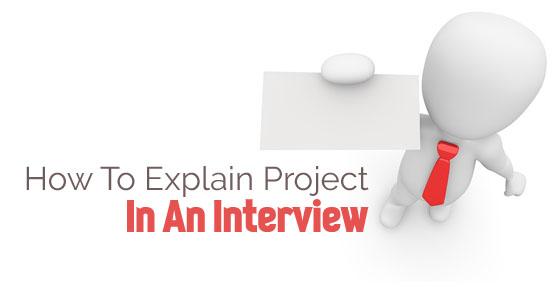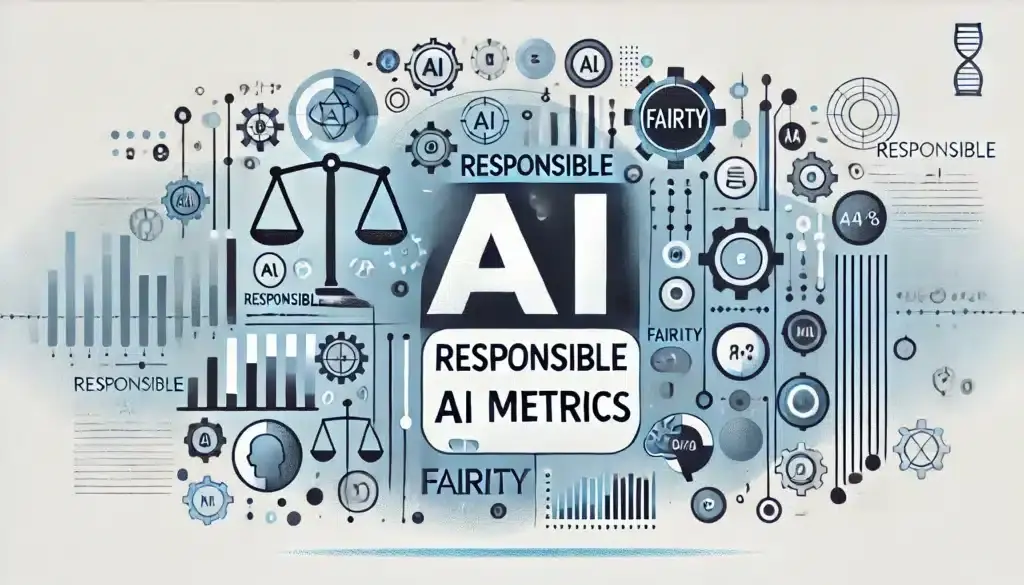Section 1 - Why Practicing Alone Works (If You Do It Right)
Solo preparation forces the kind of deep, reflective thinking that group prep can’t always achieve.
It helps you internalize why you’re making certain design or modeling decisions, not just what those decisions are.
Here’s the science behind it.
a. The “Desirable Difficulty” Principle
Cognitive science calls it desirable difficulty, the right amount of challenge improves retention.
When you practice alone, you can’t rely on immediate feedback, so your brain must self-generate explanations, which strengthens recall and reasoning.
That’s why top ML candidates often journal their reasoning while solving problems, it mimics the “think aloud” structure interviewers love.
Check out Interview Node’s guide “How to Think Aloud in ML Interviews: The Secret to Impressing Every Interviewer”
b. The Role of Active Recall
Simply re-reading model architectures or formula sheets won’t help.
Instead, you should actively reconstruct concepts from memory, the same way interviewers expect you to explain pipelines from scratch.
Practical tactic:
After studying a topic like gradient boosting, close your notes and explain it to an imaginary interviewer, as if you were teaching it.
Record yourself, then re-listen and correct your phrasing.
This single exercise builds retrieval fluency, one of the strongest predictors of real interview performance.
c. Metacognition: The Superpower of Solo Learners
Metacognition, “thinking about thinking”, is the art of monitoring your understanding.
Practicing alone sharpens this because you become your own evaluator.
You start asking:
- “Do I really understand why this model generalizes better?”
- “Can I explain variance vs bias without equations?”
- “Would I sound confident explaining this trade-off to a senior ML engineer?”
That kind of self-auditing separates advanced candidates from memorized ones.
d. The Feedback Illusion
In group study, it’s easy to get “false feedback”, someone nods, you feel confident.
But in solo prep, silence forces rigor.
The absence of immediate validation makes your internal evaluator sharper, you start noticing logic gaps, untested assumptions, and unclear transitions.
In short: practicing alone builds clarity through accountability.
Key Takeaway
You don’t need a mock partner to simulate pressure.
You need a mirror, a structure, and a reflection habit.
When done right, solo practice rewires your cognitive system to think like an interviewer, deliberate, structured, and adaptive.
Section 2 - Building a Structured Solo ML Interview Plan
Practicing alone works best when it’s structured like a feedback loop, not random drills.
Let’s build a weekly framework that scales from foundation to fluency.
a. The 3-Phase System: Learn → Apply → Reflect
This simple loop turns chaos into momentum.
| Phase | What You Do | Example |
| Learn | Study one ML concept deeply (theory, math, use case). | “Bias-variance tradeoff” |
| Apply | Solve 2–3 related interview-style questions. | ML case studies or Kaggle snippets |
| Reflect | Write or record a 2-min summary: What did I miss? What trade-offs did I misjudge? | Voice memo reflection |
This reflection step is where learning consolidates.
Check out Interview Node’s guide “From Model to Product: How to Discuss End-to-End ML Pipelines in Interviews”
b. Daily Solo Practice Blueprint
| Day | Focus Area | Action Example |
| Monday | ML fundamentals | Explain bias–variance tradeoff out loud |
| Tuesday | Coding + debugging | Re-implement logistic regression from scratch |
| Wednesday | System design | Sketch data pipelines in MLOps context |
| Thursday | Applied problem | Simulate take-home task on new dataset |
| Friday | Reflection & review | Record 5-min recap of what you learned |
| Saturday | Mock interview | Time yourself explaining a case end-to-end |
| Sunday | Rest & strategy | Identify gaps, update next week’s plan |
c. The Power of Recording Yourself
Recording your mock interviews has three psychological benefits:
- Builds awareness of filler words and unclear explanations.
- Forces temporal discipline - you realize how long your answers take.
- Provides evidence of progress - you can literally watch your fluency improve over time.
“You can’t fix what you don’t observe.”
That’s why solo mock recording is the secret weapon of top ML candidates.
Check out Interview Node’s guide “Behavioral ML Interviews: How to Showcase Impact Beyond Just Code”
d. Calibrate Using “AI-as-a-Coach” Tools
By 2026, self-prep doesn’t mean isolation.
Tools like InterviewNode’s AI Coach, PrampGPT, and LeetAI can simulate follow-ups, track reasoning depth, and highlight weak points in your phrasing.
Think of them as personal trainers, not replacements for real interviewers, but structured sparring partners.
e. Weekly Checkpoints: The Reflection Grid
Every week, assess your progress across five dimensions:
| Dimension | Question to Ask Yourself |
| Clarity | Did I explain my answers concisely? |
| Depth | Did I justify design trade-offs confidently? |
| Data Fluency | Can I reason about dataset bias, scaling, and metrics? |
| Confidence | Do I project calm and control in mock setups? |
| Transfer | Can I apply past learnings to new questions? |
Tracking these metrics keeps your solo practice scientific, measurable, not emotional.
Key Takeaway
Practicing alone only feels lonely when it’s unstructured.
Once you systematize your feedback loop, you’ll realize you don’t need a “study buddy”, you need a mirror and a metric.
Section 3 - How to Simulate Real ML Interview Pressure When Practicing Alone
One of the biggest myths about solo preparation is that you “can’t simulate the real thing.”
That’s not true.
With the right psychological framing and environmental setup, you can train your mind and body to perform under the same cognitive load as a live ML interview, without a single other person present.
This is where science meets self-discipline.
You’re not just practicing answers; you’re training your nervous system to stay calm, structured, and articulate under stress.
a. The Physiology of Interview Pressure
Let’s start with what actually happens in your body.
When an interview begins, your brain triggers a mild fight-or-flight response:
- Heart rate increases
- Cortisol spikes
- Short-term memory compresses
- Fine motor control (typing fluency) decreases
In other words, your brain prioritizes survival, not performance.
Practicing under perfect calm won’t prepare you for that.
Instead, you need stress inoculation, small, controlled doses of pressure that train your brain to treat tension as normal.
b. The Science of “Cognitive Load”
Cognitive load refers to the total mental effort required to process information.
During an ML interview, your brain juggles:
- Remembering formulas
- Writing code
- Structuring explanations
- Reading interviewer cues
- Managing self-talk
That’s a lot to handle.
When you practice alone, you need to replicate this mental multitasking, not just focus on isolated skills.
For example:
When solving an ML system design question, narrate your reasoning out loud while sketching the architecture on paper.
This forces your brain to balance verbal, visual, and logical reasoning, the same way it must during a real interview.
c. Timeboxing: The “Cognitive Timer” Technique
One of the simplest and most effective ways to simulate pressure is timeboxing, setting strict, realistic time limits on every task.
Here’s how to use it:
| Task Type | Ideal Time Limit | Purpose |
| ML coding question | 25–30 min | Simulate LeetCode or HackerRank round |
| ML design question | 45–50 min | Forces prioritization and structure |
| Behavioral answer practice | 2–3 min per response | Builds conciseness and flow |
| Post-simulation reflection | 5 min | Reinforces learning |
Your goal isn’t to finish everything perfectly, it’s to learn how to prioritize under time stress.
“Constraints build creativity.”
The best ML candidates don’t panic when time runs out, they explain trade-offs clearly.
d. Simulated “Interviewer Presence” Training
Even when alone, you can create psychological presence.
Here’s a practical setup:
- Turn on your webcam.
- Sit upright at a desk, as if facing an interviewer.
- Speak your answers out loud, maintaining eye contact with the camera.
- Record everything.
Your brain will respond as if someone’s watching, and that mild tension is exactly what you want to train against.
This is called anticipatory conditioning, it helps your body learn that pressure ≠ panic.
Pro tip: after a few sessions, play back recordings with the sound off.
Watch your body language, are you fidgeting, looking away, pausing too long?
Fixing those micro-habits is an underrated interview advantage.
e. Simulate “Cognitive Stack Switching”
In real ML interviews, you’re rarely stuck on one mode.
You’re constantly switching between:
- Coding and explaining
- Math and business reasoning
- Writing and diagramming
To mirror this, combine drills:
- Solve an ML problem in code.
- Immediately switch to explaining its real-world trade-offs.
- Sketch its system design version.
This stack-switching practice builds resilience, teaching your brain to stay fluent across different modalities of reasoning.
f. Mimic Real Company Prompts and Timing
Top candidates track their improvement using company-specific simulation cycles.
Example:
Day 1 – Google ML Interview Simulation
- 1 System design (45 min)
- 1 Coding round (30 min)
- 1 Behavioral session (20 min)
Day 2 – Anthropic / OpenAI Simulation
- 1 LLM reasoning question (40 min)
- 1 Debugging or error analysis (25 min)
- 1 Research-to-production case (35 min)
Over 3–4 weeks, this rotation helps you build contextual familiarity, so you’re never surprised by structure, only by content.
Check out Interview Noe’s guide “ML Interview Toolkit: Tools, Datasets, and Practice Platforms That Actually Help”
g. Train Emotional Regulation Like a Skill
Practicing alone means you can also train your emotional patterns, something most candidates ignore.
Here’s a neuroscience-backed sequence to control nerves:
- Pause breathing: Inhale for 4 seconds, exhale for 6 seconds, triggers parasympathetic calm.
- Verbal label your state: Saying “I’m alert” instead of “I’m anxious” rewires emotional framing.
- Simulate failure and recovery: Practice intentionally making a small mistake mid-answer, then calmly correcting it aloud.
Why?
Because every candidate eventually stumbles.
The difference between failing and recovering defines interview maturity.
h. Build the “Pressure Ladder”
Gradually scale your simulation difficulty:
| Level | Setup | Example Goal |
| Level 1 | Calm study environment | Solve simple ML question from notes |
| Level 2 | Add timer + webcam | Complete under 30 minutes |
| Level 3 | Randomize question selection | Practice adaptability |
| Level 4 | Record + rewatch | Evaluate clarity and pacing |
| Level 5 | Public rehearsal | Stream your reasoning to peers or AI coach |
This progressive exposure makes anxiety predictable, and therefore manageable.
Just like strength training, you’re increasing “stress load” safely.
Key Takeaway
You don’t need another person to feel real interview pressure.
You just need to engineer stress conditions intelligently.
Through deliberate simulation, timeboxing, self-recording, and emotional control, you transform anxiety into adaptation.
The next time you walk into a real ML interview, your body will say:
“We’ve been here before.”
And that’s when you know your solo practice worked.
Section 4 - Designing a Scientific Self-Feedback System (How to Measure Progress Without a Coach)
When you practice alone, there’s one silent killer: you can’t tell if you’re actually improving.
Most candidates mistake repetition for progress, they keep “doing practice” but not “tracking performance.”
The fix?
You need a scientific feedback loop, one that transforms your self-practice into measurable improvement.
Let’s design that system, step by step.
a. The Myth of “More Practice = Better Results”
Many ML candidates grind endlessly, hundreds of coding questions, dozens of case studies, yet plateau.
Why? Because they’re not evaluating how they’re practicing.
Cognitive scientists call this the fluency illusion:
When you review the same content repeatedly, your brain feels more confident, even though comprehension hasn’t improved.
“Comfort feels like mastery, until you’re tested.”
That’s why your solo prep must include deliberate measurement, metrics that expose weaknesses, not inflate confidence.
Check out Interview Node’s guide “The Hidden Metrics: How Interviewers Evaluate ML Thinking, Not Just Code”
b. The “Feedback Loop” Framework
Every great ML system has feedback, gradient updates, error propagation, convergence tracking.
Your interview prep should too.
Here’s a mental model:
Practice = Forward Pass
Self-Evaluation = Loss Function
Reflection = Backpropagation
If you’re not reflecting after each round, you’re training without updating weights.
A strong solo feedback loop follows this structure:
| Stage | Action | Output |
| 1. Simulation | Complete a timed or scenario-based question. | Raw performance data |
| 2. Self-Evaluation | Score clarity, reasoning, and structure. | Quantitative feedback |
| 3. Reflection | Identify specific failure modes. | Qualitative insight |
| 4. Adjustment | Modify prep plan or reattempt task. | Reinforced learning |
This loop transforms practice sessions into iterative model training.
c. Use Rubrics - Don’t Trust Intuition
When you grade yourself, avoid “felt sense” evaluation (“I think that went okay”).
You need objective rubrics, numerical or binary measures.
Here’s a sample ML Interview Self-Assessment Rubric (1–5 scale):
| Category | Definition | Goal |
| Problem Framing | Did I restate the question clearly and define scope? | 5 |
| Technical Depth | Did I demonstrate understanding beyond surface-level? | 4–5 |
| Communication | Was my explanation structured and jargon-free? | 4 |
| Trade-off Reasoning | Did I discuss pros/cons of alternate solutions? | 5 |
| Confidence / Calmness | Did I sound in control throughout? | 4–5 |
| Result Framing | Did I conclude with key takeaways? | 4 |
After every simulation, score each row, then calculate an average.
If your average doesn’t improve after several sessions, that’s signal, you’re plateauing.
d. AI-as-Mentor: How to Use Tools for Real Feedback
Practicing alone doesn’t mean practicing blind.
AI evaluation tools now act as mirrors for your reasoning patterns.
Here’s how to use them effectively:
- Text-based mock feedback:
Paste your written responses into GPT-based evaluation systems.
Ask:
“Grade this answer like an ML interviewer, identify unclear logic, missed trade-offs, and unconvincing phrasing.”
- Speech analysis feedback:
Use apps like Orai or Yoodli AI to analyze your verbal tone, filler words, and pacing. - Code review simulation:
Paste your coding answers into AI code evaluators (e.g., CodeInterpreter GPTs, InterviewNode Coach).
Ask for scoring based on efficiency, readability, and explainability. - Behavioral simulation:
Train an AI mock interviewer on your past responses, watch it adapt its follow-ups.
This mimics human unpredictability, the ultimate self-test.
e. Quantify Improvement Using Data
You’re an engineer, so measure like one.
Track your progress across three axes:
| Dimension | Metric Example | Goal |
| Speed | Avg. time to complete ML question | ↓ 20% by week 4 |
| Structure | Avg. clarity score from rubric | ≥ 4.5 |
| Adaptability | % of successful responses to curveball follow-ups | ≥ 80% |
Record this data weekly in a spreadsheet or Notion dashboard.
Patterns will emerge, maybe you’re great at analysis but weak on closure, or strong on structure but low on creative reasoning.
Data reveals the truth that memory hides.
f. Conduct “Root Cause” Post-Mortems
After every difficult session, do a failure analysis, just like an ML model debug.
Ask:
- What kind of mistake was this, conceptual, communication, or confidence?
- What triggered it, time pressure, poor framing, or lack of recall?
- What system change will prevent recurrence, more spaced repetition, diagramming, or silence pauses?
Then, write a one-line insight.
Example:
“I stumbled on pipeline scaling because I explained before clarifying scope, next time, pause 5 seconds before answering.”
Small insights compound into mastery.
g. Create a “Learning Ledger”
A learning ledger is your personal change log.
It tracks how your thought process evolves over time.
Here’s how to build one:
- Maintain a simple document or Notion page.
- For every mock session, add:
- Date
- Topic
- Mistake type
- What I’ll do differently next time
This running log becomes your memory augmentation system, it externalizes learning.
By week 4, you’ll have a tangible record of your growth curve.
h. Re-Test Old Problems for Retention
Without spaced repetition, your brain forgets 60–70% of technical details in a month.
That’s why re-testing matters.
Every 3 weeks:
- Revisit 3 old problems.
- Try to explain solutions without notes.
- Score yourself again.
If your clarity or timing drops, it’s not regression, it’s a retention gap.
Fix it before adding new material.
Check out Interview Noe’s guide “Beyond the Model: How to Talk About Business Impact in ML Interviews”
i. The “Observer Effect” of Feedback
The act of evaluating yourself creates awareness, awareness changes behavior.
That’s known as the observer effect in psychology:
“You improve what you measure.”
Every time you self-score a round, you’re not just recording data, you’re reprogramming habits.
Over time, your brain starts optimizing for measurable clarity.
That’s how solo learners build professional-grade discipline.
Key Takeaway
When practicing alone, your feedback system is your mentor.
If it’s scientific, structured, measured, and iterative, you’ll progress faster than many coached candidates.
Remember this formula:
Practice + Measurement + Reflection = Mastery
You don’t need validation, you need visibility.
When your preparation feels like model training, that’s when you know you’re doing it right.
Section 5 - Conclusion & FAQs: Building Confidence and Consistency in Solo ML Interview Prep
Preparing alone for ML interviews can be lonely, unpredictable, and mentally taxing.
But here’s the truth: it’s also one of the most effective forms of mastery training, if you use it to build self-awareness, structured reflection, and emotional resilience.
Every top ML engineer has gone through “the quiet phase”, months of deliberate solo work that no one sees, but everyone later respects.
That’s the science of self-preparation: consistency compounds invisibly, then pays off all at once.
a. The Confidence–Competence Loop
Confidence isn’t a personality trait, it’s a byproduct of preparation.
Neuroscience shows that self-efficacy (the belief that you can perform well) grows only when two conditions are met:
- You’ve practiced consistently.
- You’ve measured and seen progress.
That’s why the feedback systems you’ve designed, your score rubrics, reflection logs, mock simulations, are confidence engines.
They don’t just track progress.
They prove to your brain that you’re improving.
b. The Consistency Paradox
Most candidates fail not from lack of intelligence, but from lack of stamina.
Solo prep requires creating momentum loops, systems that make showing up easier than skipping.
Here’s a simple framework:
- Fixed Start Time: Always start at the same hour (e.g., 7–9 PM). Consistency beats intensity.
- Visible Tracker: Keep your progress chart in sight, visible growth reinforces motivation.
- Tiny Wins: Set micro-goals (e.g., “explain bias-variance in under 2 minutes”).
- End Ritual: Conclude every session with one line:
“What did I learn today that my future self will thank me for?”
That single reflection connects effort to meaning.
c. The Psychology of “Alone”
Isolation during prep often feels heavy, but research shows solitude increases metacognitive control (your ability to direct your attention and thoughts).
Solo candidates often outperform group learners in transfer tasks, applying old concepts to new problems.
Why? Because solitude enhances mental simulation.
When you rehearse scenarios in your head, you’re activating the same neural circuits you’ll use in a real interview.
That’s why solo prep feels exhausting, it’s mentally expensive. But it’s also the most authentic rehearsal your brain can get.
Check out Interview Node’s guide “How to Handle Curveball Questions in ML Interviews Without Freezing”
d. Reframing “Self-Preparation” as Professional Training
You’re not just studying, you’re training as an ML professional.
Athletes practice alone 90% of the time and perform in public 10%.
Engineers preparing for FAANG interviews should treat it the same way.
Here’s the mindset shift:
“I’m not practicing to impress an interviewer.
I’m practicing to become the kind of engineer who can think clearly under pressure.”
When you reframe your prep from performance to identity, motivation stops fluctuating.
e. The Emotional Curve of Solo Prep
You’ll experience three predictable emotional stages:
| Stage | Description | Advice |
| Phase 1: Excitement | Motivation is high, but direction is unclear. | Create your structured plan. |
| Phase 2: Friction | Progress feels invisible, self-doubt rises. | Trust your process and metrics. |
| Phase 3: Flow | Patterns emerge; reasoning becomes second nature. | Keep your pace, don’t overtrain. |
Understanding this curve helps you anticipate dips instead of fearing them.
Key Takeaway
Solo ML interview prep is not about isolation, it’s about internalization.
You’re not avoiding people; you’re building the kind of deep clarity that no external validation can replace.
When you master self-preparation, you walk into interviews not hoping to perform, but knowing you’ve already done the hardest work in silence.
“Confidence is built in private; credibility is earned in public.”
FAQs: Solo Preparation for ML Interviews
1. Can I really prepare effectively for ML interviews alone?
Absolutely.
If you have a structure, timed drills, reflection loops, and progress tracking, solo prep can outperform group sessions.
The key is consistency and feedback, not company.
2. How many hours per day should I dedicate if I’m preparing alone?
2 focused hours daily are more valuable than 5 distracted ones.
The ideal structure:
- 45 minutes concept deep dive
- 45 minutes simulation (problem-solving or system design)
- 30 minutes reflection and journaling
Quality > quantity.
3. How do I stay motivated without external accountability?
Use visible progress as motivation.
Keep a progress tracker on your desk or wall.
Each checked box, each rising score becomes a dopamine trigger, it rewires motivation from external praise to internal momentum.
4. What should I do when I feel stuck or plateaued?
Plateaus are feedback, not failure.
Change one variable: topic type, simulation method, or feedback tool.
For instance, switch from theoretical questions to applied ML design or vice versa.
5. Should I record myself during practice?
Yes, always.
Recording is your greatest feedback source.
It exposes verbal tics, unclear logic, and pacing issues you’d otherwise miss.
It’s like watching your own match footage.
6. How do I simulate real interview stress while alone?
Timebox tasks, use a webcam, and rehearse under realistic conditions.
Add background noise or ambient tension.
Your brain learns that performance pressure is “normal”, not panic-worthy.
7. How can I evaluate my answers objectively without a mentor?
Use scoring rubrics and AI-based feedback tools.
Example: Ask ChatGPT or InterviewNode Coach to critique your reasoning clarity and trade-off awareness.
Use quantitative (1–5) ratings to track improvement.
8. How do I balance technical depth with behavioral prep when studying alone?
Alternate days.
Treat them as complementary muscles:
- Technical = clarity of logic
- Behavioral = clarity of communication
One feeds the other.
Behavioral clarity actually boosts your technical credibility.
9. Should I use AI tools like Copilot or GPTs during prep?
Yes, but intentionally.
Use them as mirrors, not crutches.
They can simulate interviews, test your reasoning, or provide scaffolding for new concepts.
But you must always verify outputs yourself.
10. What’s the most common mistake solo learners make?
Practicing in silence, without speaking or recording.
You must externalize thought to simulate real interviews.
Internal confidence doesn’t translate to spoken clarity unless practiced aloud.
11. How do I avoid burnout when practicing alone?
Follow the 3R Rule: Rest, Rotate, Reflect.
- Rest your brain one day per week.
- Rotate topics to prevent monotony.
- Reflect instead of restarting when you hit fatigue.
Sustainability beats sprinting.
12. What’s the ultimate sign that I’m ready for real ML interviews?
When you can:
- Explain any concept calmly under time pressure.
- Handle unexpected questions without panic.
- Self-correct errors mid-answer.
That’s when you’ve transitioned from memorizer → reasoner → professional.
13. How can I tell if my self-prep is too easy or too hard?
A great self-prep system lives in what psychologists call the “optimal challenge zone.”
If your sessions feel too easy, you’re rehearsing, not learning.
If they feel too hard, you’re overwhelming working memory, which blocks improvement.
Here’s a rule of thumb:
- If you can answer 80% correctly but still struggle with clarity or structure, you’re training perfectly.
- If you’re breezing through every problem, increase difficulty or introduce time constraints.
- If you’re failing every simulation, simplify and master sub-components (e.g., model choice before system scaling).
14. Should I join online mock interview platforms if I’m already practicing solo?
Yes, but strategically.
Solo prep builds clarity and self-correction, while peer mocks test adaptability and spontaneity.
The key is balance:
Do 80% of your preparation alone (deep learning, reflection, simulation), then 20% in peer or AI-mock sessions to pressure-test your thinking.
This ensures you don’t “overfit” to solo conditions, you’ll be flexible in dynamic, real interviewer scenarios.
15. How do I practice open-ended ML design questions by myself?
Treat open-ended prompts like research problems.
Follow this solo framework:
- Frame the question aloud: “What is the goal, metric, and constraint?”
- Brainstorm trade-offs: Latency vs. accuracy, interpretability vs. scale.
- Narrate design choices: Speak each step as if teaching a junior engineer.
- Conclude clearly: End every solution with a summary and metric choice.
You can also cross-reference your answers with existing case study blogs, like those on Interview Node, to see if your reasoning aligns with industry expectations.
Final Note
Self-preparation isn’t the lonely path, it’s the leadership path.
You’re learning to manage your cognition, your anxiety, and your growth, exactly what top ML teams expect from senior engineers.
Keep practicing. Keep reflecting.
And remember: solitude doesn’t mean silence, it means focus.
“If you can teach yourself clearly, you can explain to anyone confidently, and that’s the real goal of ML interviews.”






